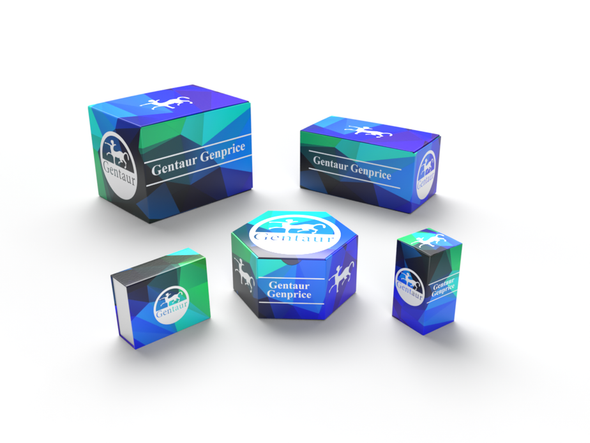Description
GPCR5A Antibody | 29-594 | Gentaur UK, US & Europe Distribution
Host: Rabbit
Reactivity: Human, Mouse
Homology: N/A
Immunogen: Antibody produced in rabbits immunized with a synthetic peptide corresponding a region of human GPCR5A.
Research Area: Membrane, Signal Transduction
Tested Application: E, WB
Application: GPCR5A antibody can be used for detection of GPCR5A by ELISA at 1:62500. GPCR5A antibody can be used for detection of GPCR5A by western blot at 1.0 μg/mL, and HRP conjugated secondary antibody should be diluted 1:50, 000 - 100, 000.
Specificiy: N/A
Positive Control 1: Cat. No. 1205 - Jurkat Cell Lysate
Positive Control 2: N/A
Positive Control 3: N/A
Positive Control 4: N/A
Positive Control 5: N/A
Positive Control 6: N/A
Molecular Weight: 39 kDa
Validation: N/A
Isoform: N/A
Purification: Antibody is purified by peptide affinity chromatography method.
Clonality: Polyclonal
Clone: N/A
Isotype: N/A
Conjugate: Unconjugated
Physical State: Liquid
Buffer: Purified antibody supplied in 1x PBS buffer with 0.09% (w/v) sodium azide and 2% sucrose.
Concentration: batch dependent
Storage Condition: For short periods of storage (days) store at 4˚C. For longer periods of storage, store GPCR5A antibody at -20˚C. As with any antibody avoid repeat freeze-thaw cycles.
Alternate Name: GPCR5A, GPRC5A, RAI3, RAIG1, GPCR5A
User Note: Optimal dilutions for each application to be determined by the researcher.
BACKGROUND: GPCR5A is a member of the type 3 G protein-coupling receptor family, characterized by the signature 7-transmembrane domain motif. The protein may be involved in interaction between retinoid acid and G protein signalling pathways. Retinoic acid plays a critical role in development, cellular growth, and differentiation. Its gene may play a role in embryonic development and epithelial cell differentiation.This gene encodes a member of the type 3 G protein-coupling receptor family, characterized by the signature 7-transmembrane domain motif. The encoded protein may be involved in interaction between retinoid acid and G protein signalling pathways. Retinoic acid plays a critical role in development, cellular growth, and differentiation. This gene may play a role in embryonic development and epithelial cell differentiation.






